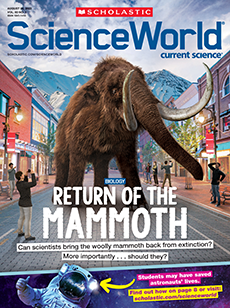When a Siberian flying squirrel climbs out of its warm nest high up in the trees, its first order of business is to do its business! Often that’s at a preferred “toilet tree.” To get there, the squirrel glides through the air using winglike structures that stretch between its wrists and ankles. Once there, the squirrel clings to the bark and releases a steady stream of pellets onto the ground below. Nature photographer Tony Wu used a high-speed camera to snap this photo. His camera takes 30 photos per second, which Wu then merged into a single image of the squirrel’s entire bathroom break.
Siberian flying squirrels are found throughout northern Europe and Asia. They’re herbivores, so they eat only plants. Because they’re nocturnal, they forage for food late in the evening and mostly stay in their nests during the day. That can make it hard for scientists to find the squirrels. Luckily, the animals’ poop is a great giveaway as to where they’re located.
By searching for pellet piles at the base of trees, conservationists can track squirrel populations, says Vesa Selonen. He’s an ecologist at the University of Turku in Finland. The animals are a protected species in Europe, so it’s important to keep track of their numbers and locations. It isn’t clear why the squirrels choose a favorite potty spot. But it’s a good thing they do, so scientists can make sure their numbers aren’t declining.
